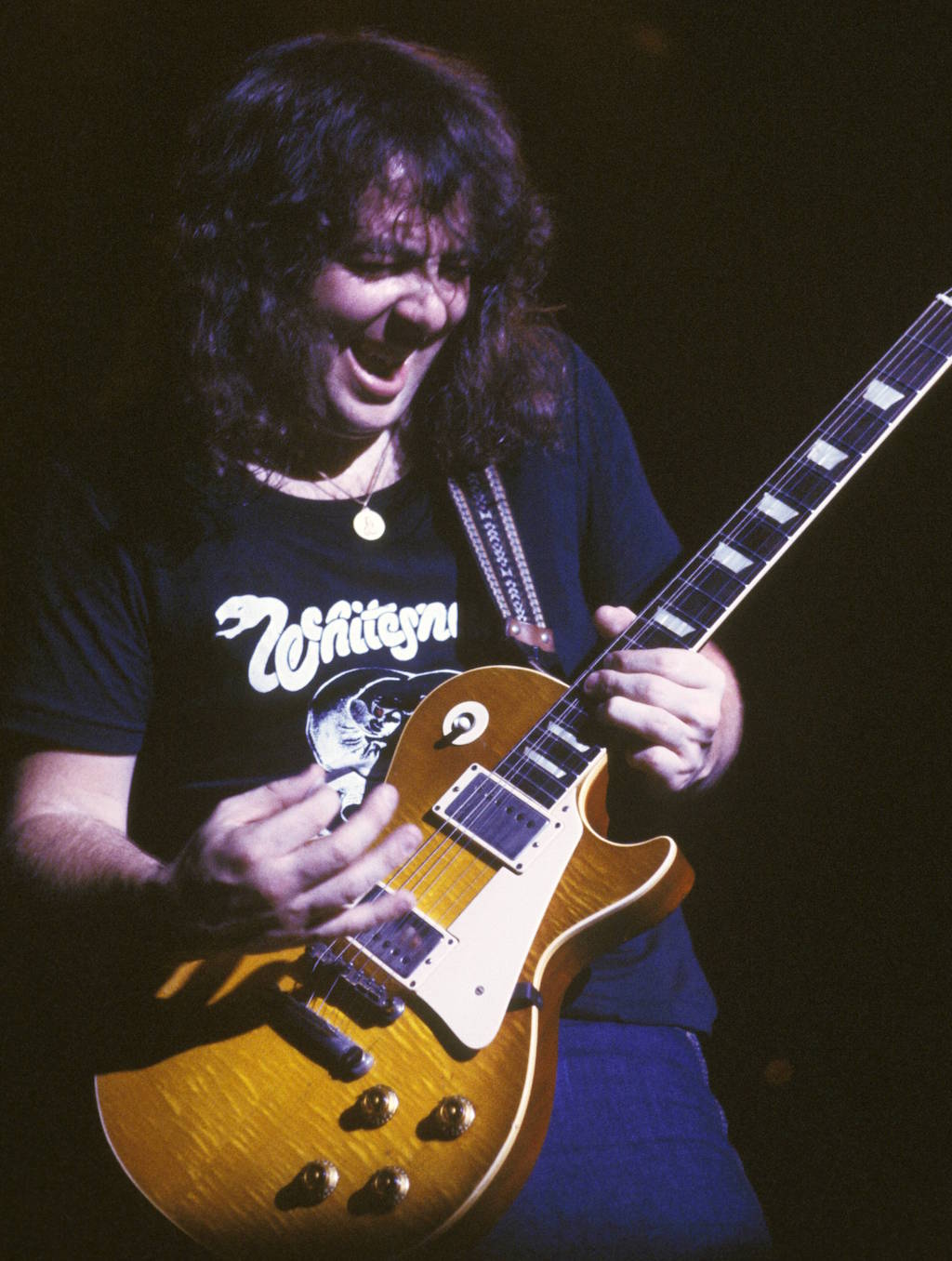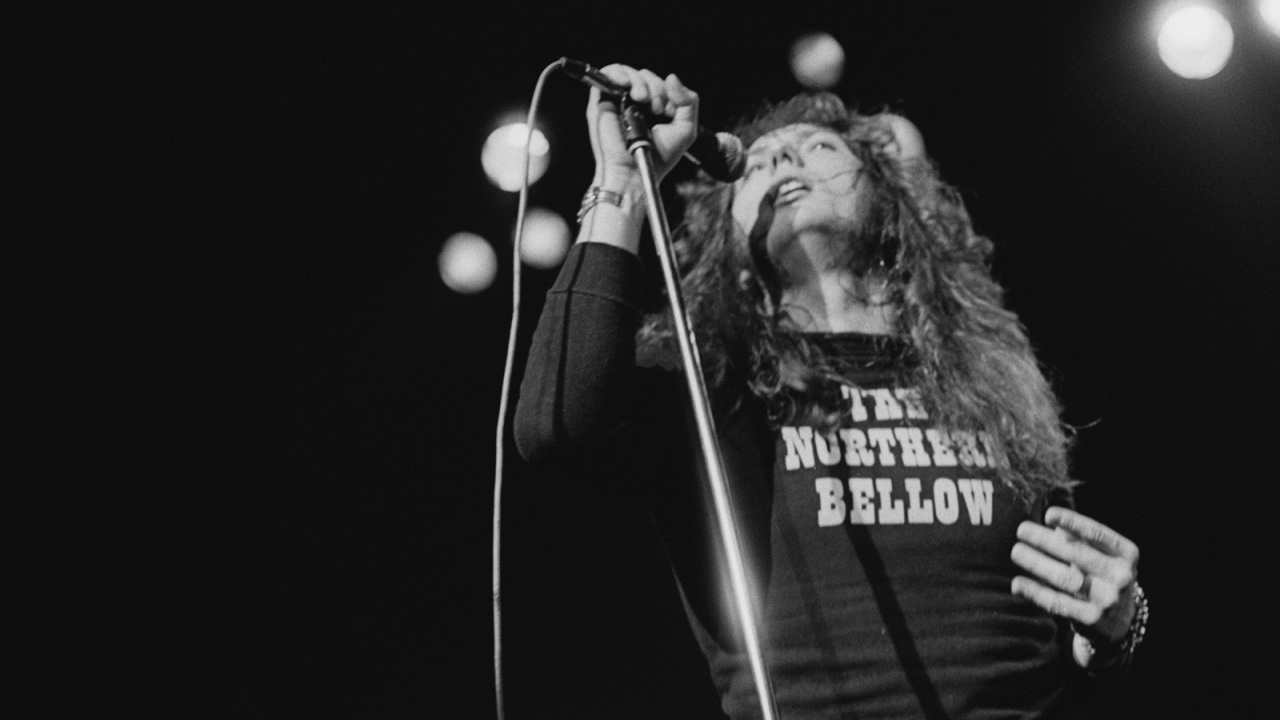For those of a certain pedigree (ie. longish in the dental department), Whitesnake at Hammersmith Odeon was iconic, a gig fans looked forward to with huge anticipation. For the band themselves, it came to represent something special, the benchmark against which their all other live dates were measured. And for all their subsequent success in arenas and stadia, nothing has ever compared to the Hammersmith Choir, as David Coverdale dubbed the audience at the venue.
This was all in the future when the band announced they’d be headlining the Odeon on November 23, 1978, the last of 18 dates on a UK tour promoting the Trouble album. In 2014 such a lengthy tour seems like a pipe dream, but in those days it was actually the norm for big – or biggish – bands. And it was a Capital step up for Whitesnake, after playing at the Lyceum Ballroom just four months earlier.
Although this was right at the birth of the New Wave Of British Heavy Metal, it was perhaps no surprise that Magnum were the opening band. They weren’t strictly a NWOBHM name, but had only just released debut album Kingdom Of Madness, and would be associated with the genre over the next couple of years, albeit on the fringes.
The album had been well received, being a British take on pomp rock, which itself was an American affectation of prog. But onstage, the five didn’t exactly appear inspirational. They looked like extras from Last Of The Summer Wine, dressed up for an outing to the local bingo hall on a particularly frisky Saturday night. Quite frankly, ridiculous.
But they sounded really good. Live, the songs from their one album to date hit the mark, and Kingdom Of Madness itself got a more than respectable reaction. Magnum still had work to do, especially on that risible image, but the signs were promising.
But this was merely the aperitif before the main course, which proved to be a banquet of blues rock, performed by one of the best bands on the circuit. Coverdale had blossomed into a stylish frontman who not only had a ranging and deeply sublime voice, but kept audiences in his pocket with a succession of bawdy one-liners and seaside postcard humour. This divergence between Carry On chuckles and high-brow laryngial gymnastics would, of course, become the usual Coverdale modus operandi.

However, this was far from a one-man show,. The main ‘Snake had surrounded himself with spectacular talents, ones suited to the Whitesnake style. Guitarists Micky Moody and Bernie Marsden (above) complemented and shadowed each other; it could be convincingly argued that their partnership was the best the band have ever had. Jon Lord was on keyboards and stepped smoothly into the new challenge, adding flourishes, but always doing what was best for the music. Neil Murray was an unfussy bassist. You got the feeling he could easily stretch out if it were required, but was comfortable with buzzing on the groove. And drummer Dave Dowle might not have had the chops of his eventual replacement Ian Paice, but he was up to the challenge here, and never let anyone down.
As soon as the band kicked into opener Come On, the crowd were up and roaring, and the atmosphere never dipped. Might Just Take Your Life nodded back at Coverdale and Lord’s Deep Purple past, while Lie Down (A Modern Love Song) kept the rhythms percolating. However, the highlight happened very early in the set, when the band delivered their version of Bobby Bland’s Ain’t No Love In The Heart Of The City. This was to become the apogee of the Whitesnake live performance over the next few years, a regal blues rock paean that got everyone singing along. Low-key in presentation, it was inspirational, and the Hammersmith Choir literally sent shivers down the spine. On this night, you could tell Coverdale was genuinely moved by the reaction. Here was a song that connected band and audience, the true joy of live music brought into focus.
Other masterstrokes were a pristine version of Purple’s Mistreated, the instrumental flutter of Belgian Tom’s Hat Trick and a sumptuous retelling of Breakdown from Coverdale’s Northwinds solo album.
This was still early in Whitesnake’s career, so the band were feeling their way forward, and some of the classic songs now associated with the band’s live shows were way off in the future. But with solos from Moody and Lord to add depth and gravitas – neither were prepared to play flashy abominations, as would be the case with subsequent Whitesnake soloists – the set was balanced and confident.
The way the sextet interacted and moved onstage told of a band who were meshed into one dynamic, thrusting unit. They were understandably still getting to grips with what they could all do, and add, to make the band even better. But the vitality of the music was matched by the dedication of the crowd.
And if you want proof that here was a landmark for Whitesnake, then check out the Live At Hammersmith record, which was released only in Japan, but features some of this Hammersmith performance, although sadly not the entire gig. In 1980, this was packaged as part of the more widely available Live…In The Heart Of The City album.
The show was very much a band performance. And if all you’ve got to go on are recent Whitesnake tours, then check out the live recording from the night in question. You’ll appreciate why there’s so much affection for Whitesnake. A special occasion for, and from, a special band.

